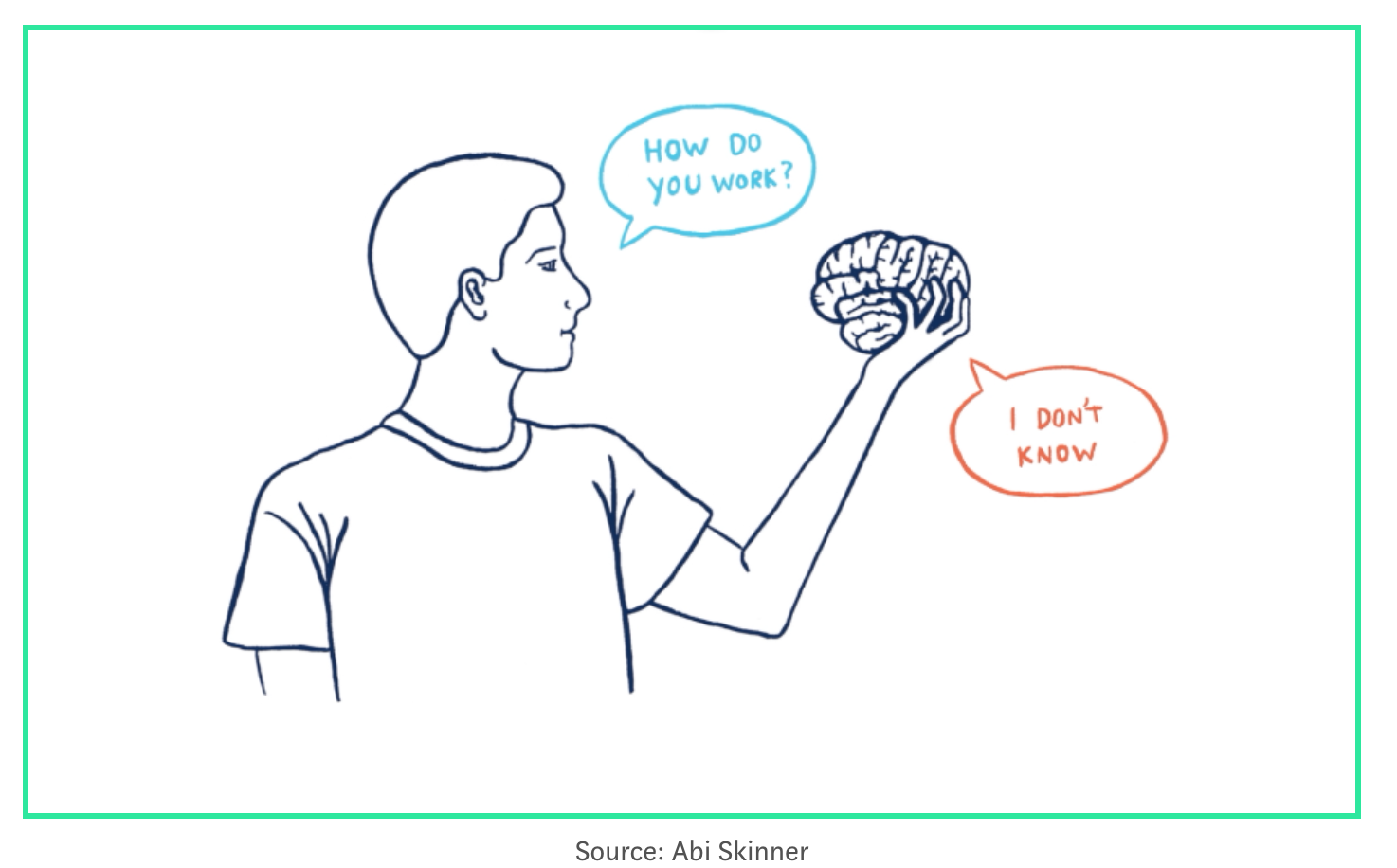“It’s funny being human”
- me @2001 in a Marriott sports bar
From a flippant comment in a sports bar nearly 20 years ago to developing Product EQ - a concept focused on bringing human skills like resilience, creativity, leadership and emotional intelligence into our product practice; here’s the story so far.
There I was. Sitting in a Marriott hotel sports bar in downtown Chicago in the middle of the afternoon on a weekday having a drink with a good friend — and suddenly former colleague — when I said that phrase out loud.
“It’s funny being human.”
We both laughed because it felt like such an obviously yet unspoken and simplistic statement to describe the events of the day and what I had just done.
It was 2001, and my friend Melissa and I were celebrating my resignation at a start-up that we had both worked at for nearly three years. The Marriott hotel bar just happened to be the closest bar to the office and over time had become a sort of private conference room for us to gossip and plan our next moves.
Melissa and I had been with the company for the dizzying heights of private planes and orders of vintage wines by founders at weekly Friday night happy hours in some of downtown Chicago’s finest establishments. We were there for the layoffs that came in 2000 when the bubble had burst. We were also there for the company’s change in direction (now called a ‘pivot’) into a data analytics company.
On the surface there was no reason to quit my job. Melissa and I, and the company, had survived the first bubble. I still had my job and was paid very well for it. I had a comfortable life in a great neighbourhood in Chicago with good friends all around. For someone still at the start of her career, everything was going pretty well.
Yet, at the same time I felt like I was crumbling. While working at the start-up, I was going to graduate school part-time at Northwestern University and had just gone through the ending of a relationship. I was exhausted — mentally and physically. I had a waves of emotions hitting me constantly that I had no way of controlling.
At work, I spent a lot of time in the ladies room crying; hoping when I emerged from my sanctuary — the second cubicle on the right — that no one would see my splotchy read face. After all, how could I go to meetings and try to be the perfect employee that I felt I should be with a red face and welled-up yes? To paraphrase Tom Hank’s character in A League of Their Own, “There’s not crying at work!” — especially if you were a young woman who wanted to be taken seriously.
And the thing was — I had no idea why I was crying uncontrollably and feeling like this. I was young and confused and putting too much pressure on myself, that was clear. But I didn’t have the experience, knowledge, guidance or language to describe what was happening.
Instead, in my mind the solution was something much more grand. I would leave work, leave school, put my apartment in storage and get away. A road trip — that would help me get out of this “funk!” I know, not your average reaction, but that was mine.
I had a few challenges to overcome before the plan could become reality. One, quitting the job — which was now done. Two, I didn’t own a car (essential item for road trip). The quickest solution I could think of was renting one. Why not, I thought? Rental cars have unlimited miles, and I planned on doing a lot of miles.
So, I hired the cheapest, most fuel efficient car I could that would also transport my mountain bike. It happened to be a small pick-up truck called a Ford Ranger. When I went to pick it up from the rental office at Chicago’s O’Hare airport, I was told I had been given an upgrade … to a king-cab, Ford F-150, bright red pick up truck. “So much for the fuel efficiency,” I thought. But at the time, I didn’t care — I just wanted to go. So, the truck, quickly named “Big Red,” and I left Chicago and drove across the USA for three months — visiting friends and family along the way. I was convinced if I had space, sun and adventure all would sort itself out.
Big Red
Hitting the road
Over the next three moths I drove across the country in Big Red on my own. This was before the days of Google Maps and Waze, so I relied on a printed atlas of the US, and lemonade stops at the Cracker Barrel where I could also rent books on CD. That was my life. Stripped back and seemingly enjoyable.
I put 9,000 miles on Big Red — driving through the Blue Ridge Mountains of North Carolina, down to the tip of Key West. Back through New Orleans to experience Jazz Fest. Through Texas, Taos and Sedona in New Mexico; Tucson, Arizona, then to San Diego, back through Las Vegas (of course). I hiked through the Grand Canyon and finally — running out of money — drove back home to Iowa to see family.
After the three months was over, I returned to Chicago and finished grad school. Three days after graduation, I headed to San Francisco to work at Yahoo! on another recruiting product.
I had an amazing adventure, but hadn’t solved anything really. I still didn’t understand the emotions that drove me across the country. But, I was refreshed, tanned and had a lot of good stories to share with friends and family. I was ready to go again … let the cycle of work, play and misunderstood emotions ride again! Until the next time…
And of course, it happened again, and again … and again.
It took me another five years before I started to realise that to actually feel better, I had to do some work on me — the real me. Not me as the persona I had created in my mind — the perfect marketer, product person, manager or team member.
Don’t get me wrong, I was doing a pretty good job learning the technical skills of my job. In early 2003, I was learning Agile, leading teams in stand-ups and planning sessions. I was doing focus groups all across the country and interviewing potential users, all in spirit of building delightful UGC products at Yahoo! (that’s user generated content for those who missed that wave). I was writing stories for sprints, prioritising backlogs, thinking about vision statements, negotiating product launch plans, you name it.
While I was doing well with mastering the what of a product person’s work at Yahoo!, I was struggling with the how.How do I show up at work when I’m down? How do I make a mistake and accept it as a learning and not a career-ending narrative? How do I acknowledge that a bad day can simple just be a bad day? How do I work through tensions with my boss or other stakeholders without taking it personally? How do I — driver of Big Red — actually lead a team?
Simply put, how do I bring my emotions into work and do so in a positive and productive way? I had a lot to learn.
Starting the Real Work
I began working with a coach in San Francisco in 2006 to help me start to unpack all of this. It’s been a long journey and it’s one I still work on every single day. But, with support, commitment and a lot of time, I’ve made progress.
I’ve learned about self awareness and how important it is to understand my own emotions and core beliefs. By better understanding those I can better understand what drives my behaviours and actions and — importantly — how they impact others.
I’ve learned that being adaptive doesn’t just mean going with the flow on a project at work, but having the internal infrastructure to sense a need for change and, individually or collectively feel safe and confident in move towards it.
I’ve learned that conflict — be it with a colleague or my partner at home — isn’t bad. Quite the opposite. It’s natural and it’s never, ever going to go away, so the best thing that I can do is understand my place in it, try to empathise with others involved and work towards a positive resolution that can make any relationship even stronger.
I’ve learned that things like resilience and emotional self control can become my super powers. They can make me a more empathetic partner and coach. They help me to respond rather than react and, most importantly, the can help me help others.
I’ve learned that having help and support in this journey is crucial and that everyone truly does need a coach — be it a professional that you work with or a peer.
I no longer pass this thinking off as just a funny side effect of being human with flippant comments like that memorable one I made at that bar in Chicago. Now I view the work on these essential human skills as the real work.
Creating Product EQ
Over the last few years I’ve started thinking more intently about how to integrate my personal experiences into the work I do with product management, org design and culture transformations.
I started blogging about it here under the title of Product EQ, andI’ve spoken about it at events around the world. I’ve also been able to test my thinking with organisations of all shapes and sizes, finding opportunities to bring a human skills focus into everyday product work, particularly how teams think about hiring.
It’s been quite a ride so far, with much more to come. Over the coming weeks, I’ll be talking more about Product EQ, what it is, and how you can bring it into your product and hiring practices. Get notified of new posts by signing up here:


